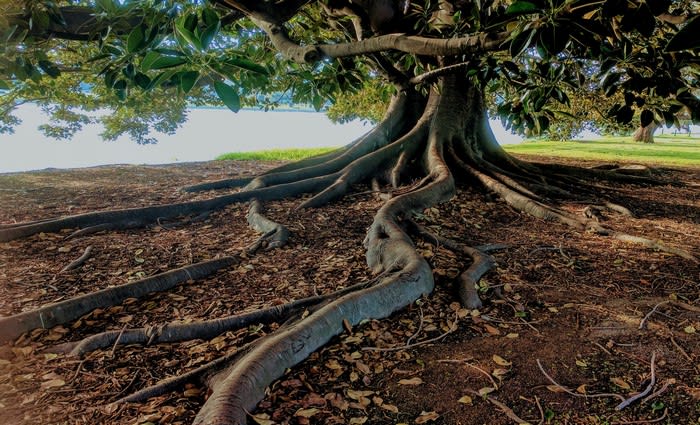Tree change and hinterland property markets back in vogue: Tim Lawless
EXPERT OBSERVER
There has been a surge in demand for properties located in coastal and hinterland ‘lifestyle’ regions and towns.
While a great deal has been written about the resurgence in the so called ‘sea change’ phenomenon, many of the prime hinterland regions within close proximity to Australia’s capital cities have also benefited from a renewed ‘tree change’.
Here is an analysis on the trend around tree change activity in Australia, with some interesting results.
I found that although the pace of capital gains is generally easing, a variety of factors have contributed to renewed demand for properties outside the cities. A large part of it must be attributable to the ‘wealth effect', where home owners (particularly those in Sydney and Melbourne) have seen a substantial wealth boost via their property holdings. Couple this with a large cohort of baby boomers seeking out holiday homes or relocation options as they shift into retirement age, and the demand picture becomes more pronounced.
Perhaps another element is the growing acceptance and popularity of ‘telecommuting’ thanks to faster internet speeds, wider employer acceptance of working from home and broader availability of technologies such as VPN, which provides a secure virtual office environment for staff working remotely.
A final piece of the puzzle comes back to housing prices and affordability. It’s often the case that hinterland properties will provide a lower entry point to the market relative to their coastal or big city counterparts, especially when you take into consideration that typical block sizes are much larger. Looking across some of the most popular hinterland regions adjacent to the capital cities shows a broad range of values and historic growth conditions.
Across the selected regions, the hinterland areas of the NSW Southern Highlands and the Macedon Ranges in Victoria show the most significant value premium. The median dwelling value across the Southern Highlands of NSW is just over $735,000, while the Macedon Ranges have a typical dwelling value of roughly $700,000 – not cheap, but both regions show a lower median dwelling value relative to their respective capital cities.
At the other end of the spectrum is Tasmania’s Central Highlands, where the typical house is worth just over $200,000. The regions to see the strongest growth over the past five years are generally very different to the best performers over the past twelve months. The hinterland areas peripheral to Sydney have dominated the capital gain stakes over the past five years, however growth in those areas has slowed substantially over the past twelve months.
The regions to see the strongest growth over the past five years are generally very different to the best performers over the past twelve months. The hinterland areas peripheral to Sydney have dominated the capital gain stakes over the past five years, however growth in those areas has slowed substantially over the past twelve months.
The past twelve months has seen the Gold Coast hinterland record the fastest rate of capital gain, with dwelling values up 8.1%, followed by Vic’s Macedon Ranges where growth seems to have rippled away from the previously more popular Yarra Ranges.
Gold and Sunshine Coast hinterland regions
The South East Queensland hinterland regions are continuing to see values rise, although the trends are moving in different directions across the Gold Coast and Sunshine Coast hinterlands. The Sunshine Coast hinterland has seen the annual pace of capital gains ease from 6.0% a year ago to 2.2% over the twelve months ending August 18. Conversely, the Gold Coast hinterland is recording an acceleration in capital gains, with the pace of annual growth rising from a recent low of 1.2% per annum earlier this year to the current annual pace of 8.1%.
Sydney and Northern New South Wales hinterland regions
Each of the selected hinterland areas of NSW have seen a consistent reduction in the pace of capital gains, with the Blue Mountains slipping into negative annual growth for the first time since early 2012. Dwelling value growth was stronger across the markets adjacent to the Sydney metro area over the recent growth cycle. Both the Blue Mountains and Southern Highlands have seen dwelling values rise at slightly more than 9% per annum over the past five years, pushing dwelling values substantially higher relative to hinterland region of northern NSW where the average annual growth rate has been much lower at 3.9%.
Melbourne hinterland regions
The Yarra Ranges have substantially outpaced the Macedon Ranges based on capital gains over the past five years. Properties within the Yarra Ranges have recorded an average annual rise of 7.8% over the past five years compared with the Macedon Ranges where values have tracked 2.6% higher each year on average. Despite the strong capital gains across the Yarra Ranges, Macedon Range properties hold a $26,000 premium over Yarra Range properties based on the median value across both regions.
Hobart and Adelaide hinterland regions
While growth conditions slow down across Hobart, the Central Highlands has seen some momentum gathering with the pace of capital gains accelerating over the past year. Values were up 6.8% over the past twelve months compared with the five-year average rate of growth tracking at 5.1%. The Adelaide Hills shows far less volatility, however values are in across the hinterland region of Adelaide continue to trend higher, up 0.8% over the past twelve months, down from 2.1% annual growth a year earlier.
Perth hinterland regions
Perth’s eastern hinterland regions have shown a similar trend the broader Perth metro region, with dwelling values generally tracking lower since 2015. The Kalamunda region has seen dwelling values fall by 15.9% since the market peak, while values have fallen even further across Mundaring, down 19.9% since the market peak. The silver lining to the downturn is that housing prices are now around the same as they were in 2006/2007.
Tim Lawless is CoreLogic's head of research








